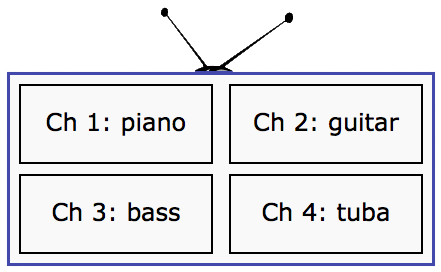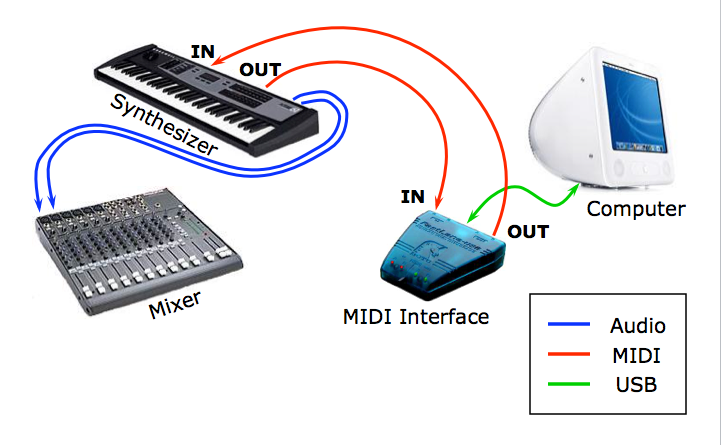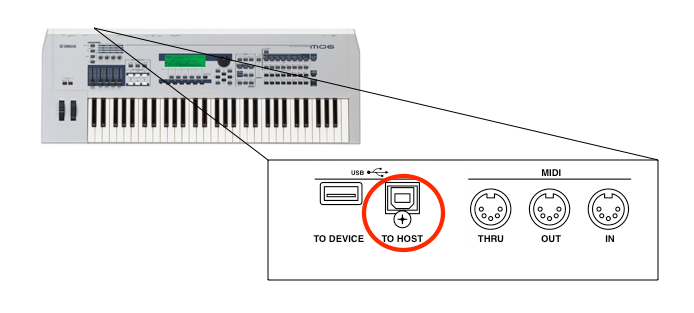Connecting Multiple MIDI Devices
What if you have more than one external synthesizer? Your MIDI
interface might have more than one set of IN and OUT ports. Then
you can connect your two synthesizers separately. But if you have a
single-port interface, you must make use of the THRU port
found on many synthesizers to create a “daisy-chain”
(series) connection of devices.
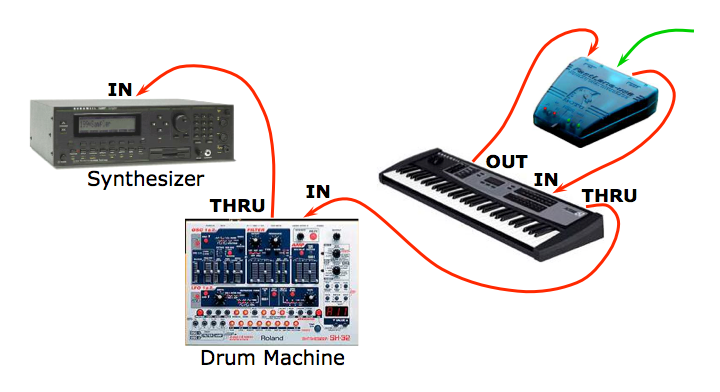
When the computer plays a sequence, the MIDI messages go first to
the keyboard synthesizer, which makes sound in response. The
keyboard sends a copy of the incoming messages out its THRU port,
and these enter the drum machine on its IN port. The same thing
happens again between the drum machine and the rack-mount (i.e., no
keyboard) synthesizer, which is the end of the chain.
This is a handy way to connect devices, but it has one big problem:
all the devices must share the same 16 MIDI channels. That might
not be enough channels to construct a full arrangement of a song
with many different sounds. The main problem, though, is that you
would have to make the various devices ignore the channels you
don’t want them to respond to, which requires a lot of
configuration that you probably don’t want to bother with in
the heat of creation.
The solution to this problem is to get a multi-port MIDI
interface, such as the one below. It has 8 independent sets of
IN/OUT ports, each of which can carry 16 channels, for a total of
128 channels.
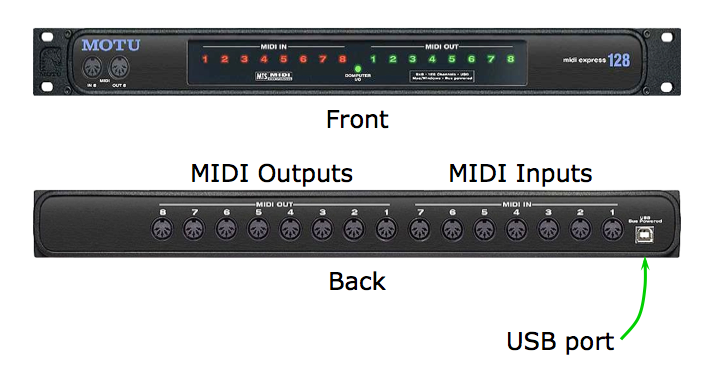
Best of all, when you hook devices up to this interface, any device
can control any other. For example, the keyboard controller could
play sounds on the drum machine or the rack-mount synthesizer. The
MIDI guitar controller could make sounds on all the other devices.
The routing would usually be configured in your sequencer software.




